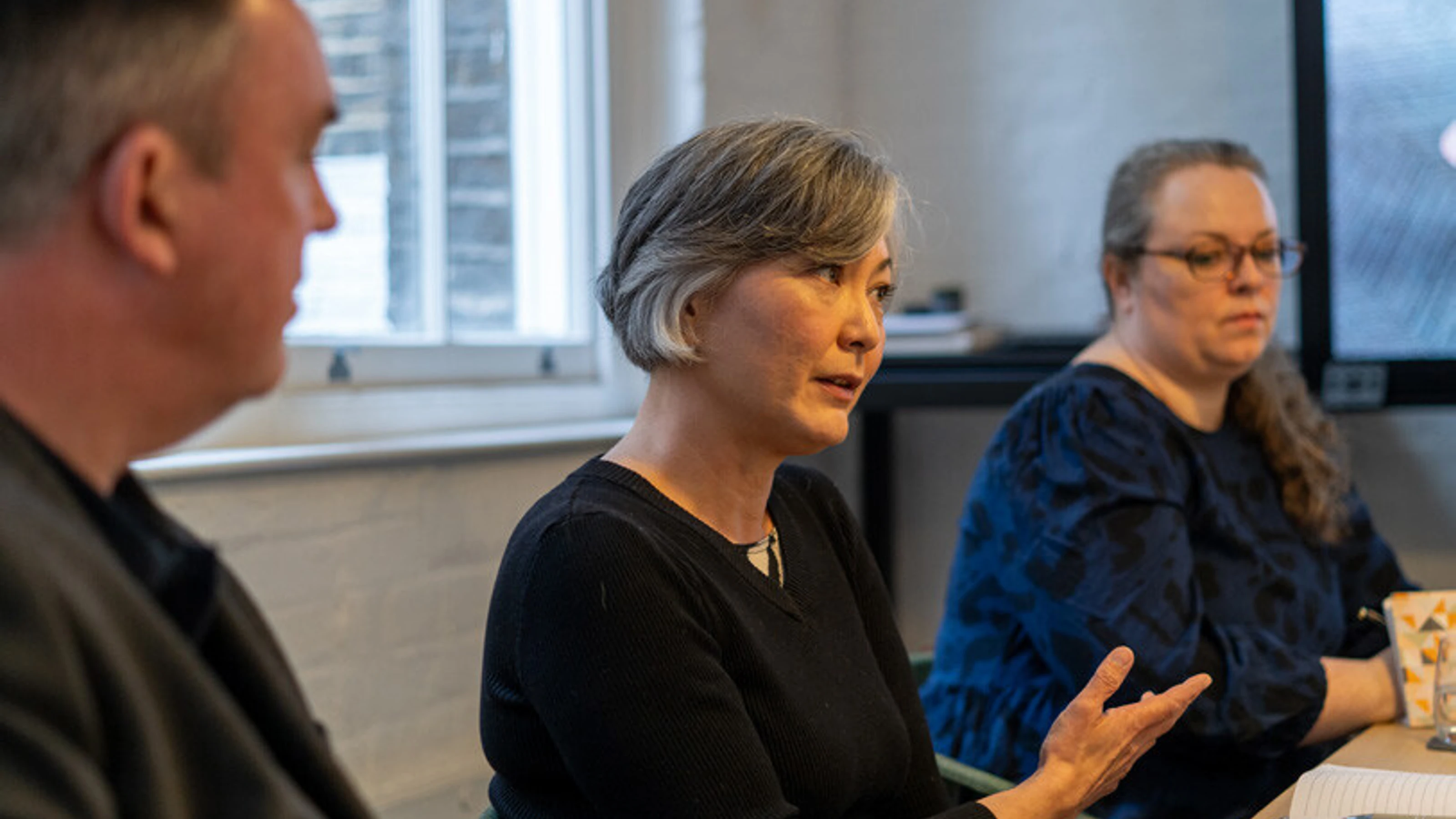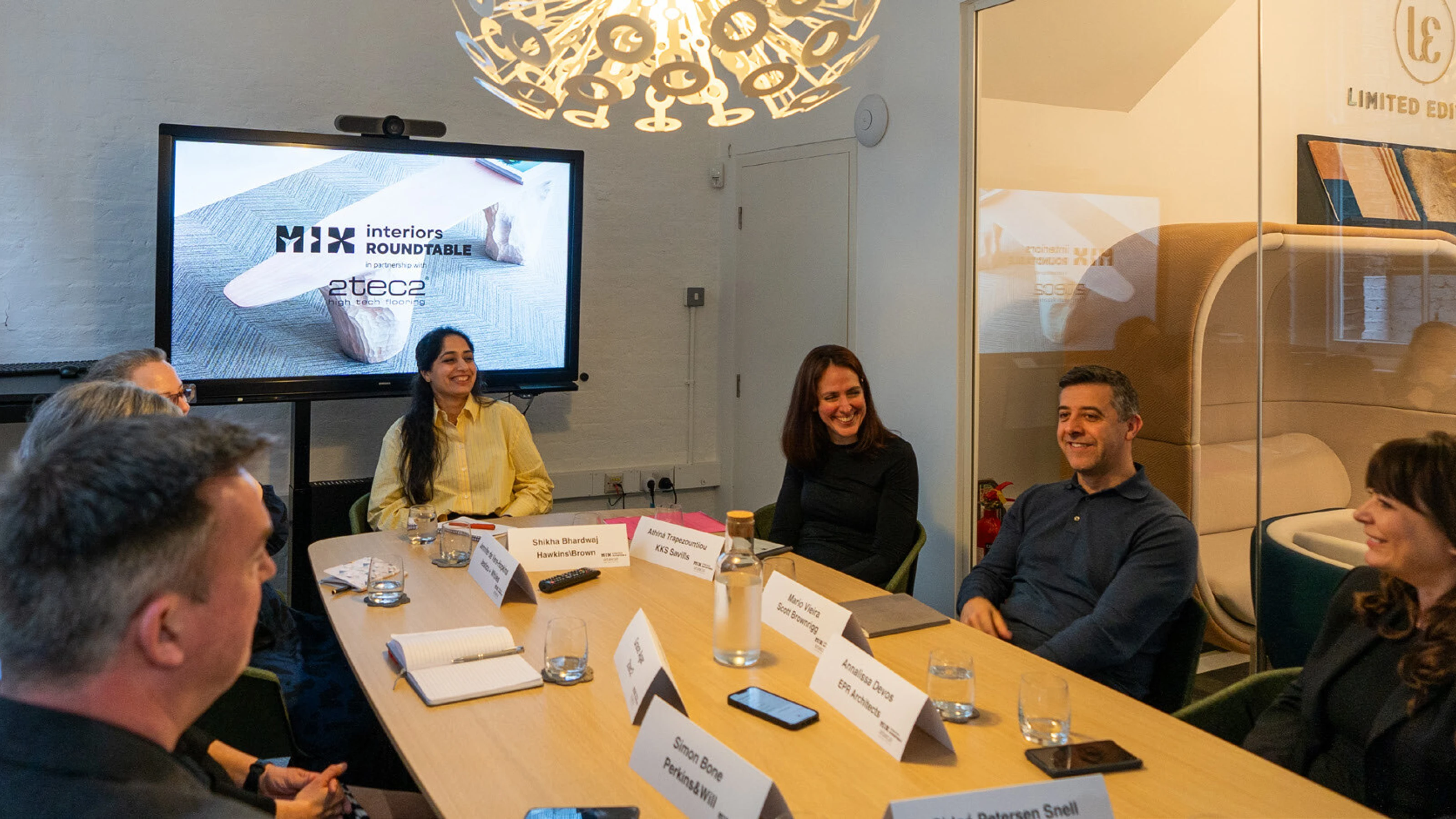In this partnership with magazine Mix Interiors, we explore the importance of authentic narratives on sustainability. We gathered at our 2TEC2 Clerkenwell studio in London with other manufacturers and designers to broach the gap between promises and practice, and ask: how can we walk the talk when it comes to sustainability?
(Click here for the article and video by Mix Interiors.)
Tailored education and engagement are crucial to real progression
For many years, our industry has grappled with the sustainability ‘say-do’ gap – many claims and less meaningful actions to hit the ambitious goals we set for ourselves. Is there a clash in how designers are expected to talk about projects, versus the reality?
“Sustainability is at the forefront of a lot of messaging right now – we need to cut through the noise and find out what is authentic.”
“Each client is going to have a unique perspective in terms of what they’re focused on, and then it’s about working out what we can achieve within the confines of the project. Not every programme and every budget is going to be able to tick every box, but there’s always something that you can push that little bit further – go a little bit deeper”, says Perkins&Will’s Simon Bone.
For Hawkins\Brown’s Shikha Bhardwaj, the key to this type of engagement is discussing the project’s purpose and what the client aims to achieve early on, including their stance on sustainability, and establishing a methodology that aligns with this.
“We need to make sure you bring the client and all the other consultants in a room to understand what really matters to them early on. So, what’s the purpose of this project? Where do you associate yourself with sustainability? Is it about gathering badges, or is it about really delivering a building that actually works and attracts tenants? Once you have the methodology set, you have people linked with a purpose – and when they say it, they get attached to it and want to see what happened to their strategy.”

Annalissa Devos, EPR, agreed. “You need to figure out what everyone’s emotional drivers are, and then figure out how to tailor that narrative with your end goal. If you go in and you’re just hard lined with blinkers on saying everything needs to be sustainable, they will react to that: ‘you’re just costing me money.’ But if you figure out how you sell that story or help them sell that story to their target audience, it’s more effective and beneficial.”
“Clients may not always prioritise sustainability, but as their architect or designer, it’s our duty to guide them,” continued Savills’ Athiná Trapezountiou. “They rely on our expertise to integrate sustainable practices, even if it’s challenging or costly, to achieve solutions that are long-lasting and beneficial. What can we do to make it less expensive, and still do something better?”
Embracing honesty is always the best policy
“We’ve got to start talking and sharing the challenges we’re having as an industry and being very open about what we’re doing to move forward,” said Perkins&Will’s Bone, “so people understand we are making an improvement and moving towards that goal.”
“One of the issues with greenwashing is that it breaks down trust.”
“And honest conversations open up collaboration – particularly with manufacturers, because we all have very similar problems,” continued 2TEC2’s Grace Agar.
“2TEC2 has made great advances in producing sustainably; for the last 5 years we have been building our own recycling plant. It’s now operational, using all of our manufacturing waste. The next phase will be the takeback scheme. However, to conform to our EPD, we need to know exactly what is in the mix created from our recycling process. The problem’s the glue. This can’t be included in the recycled material, so our challenge is how to remove the glue in a way that’s environmentally sensitive – and then what to do with the waste afterwards? Sharing that information and working together means that eventually those products will be cheaper. It doesn’t necessarily mean that if it’s a sustainable product, it’s going to be more expensive – we’re using less energy, we’re using less water, spending less to make our product. So, honesty and collaboration are important.”

Certifications: is there an easier way to clarify and compare?
We’ve heard what some of the challenges are as designers. Clarity and simplification of certifications came top of the list, designers grappling with the complexity of evaluating and comparing different materials, finishes and products due to lack of standardisation.
Gathering and comparing information from various sources is difficult, commented Trapezountiou from Savills. “We are often given so many different pieces of information when specifying products and materials – we struggle to bring them together to compare. How can we make things easier?”
“In terms of information from manufacturers, it goes down to that life cycle,” continued Vieira. “If you do have things that get stripped out more often, I’d like to know what happens to that at the end of life – what’s your plan? As a manufacturer, if you’re responsible for bringing something into the world you should be responsible for dealing with it afterwards; maybe the only way to deal with it is regulation.”
